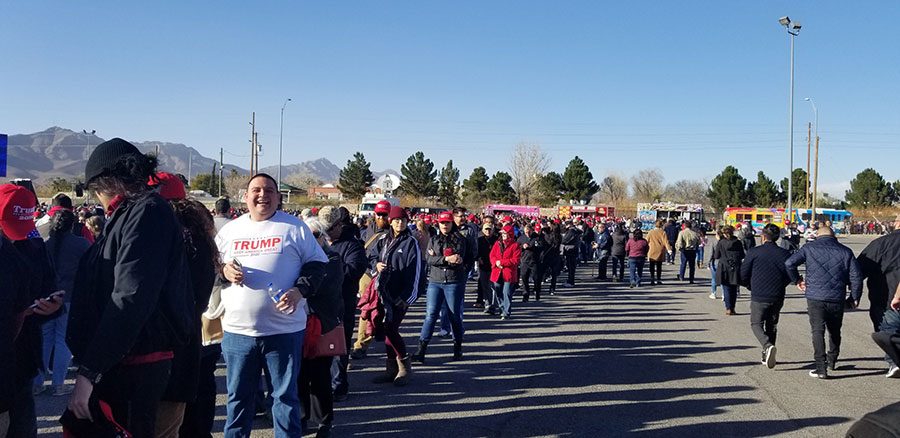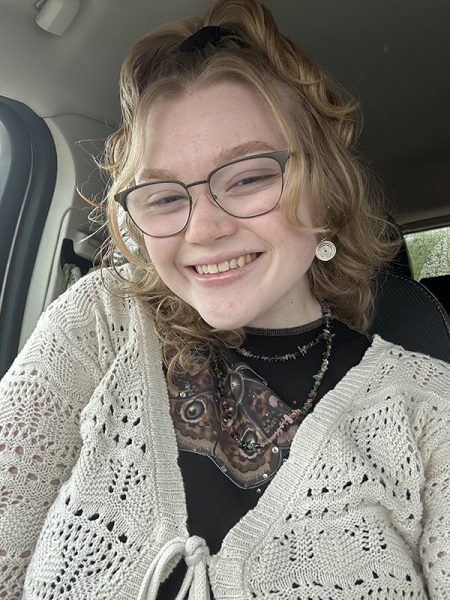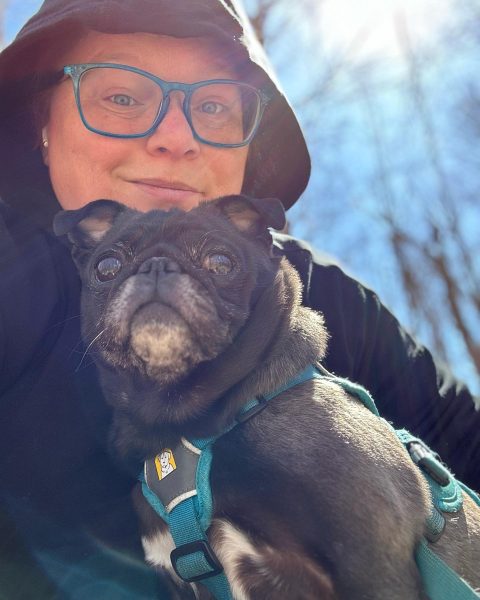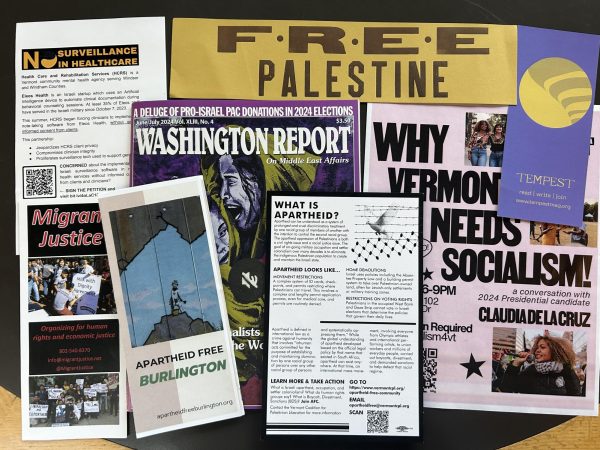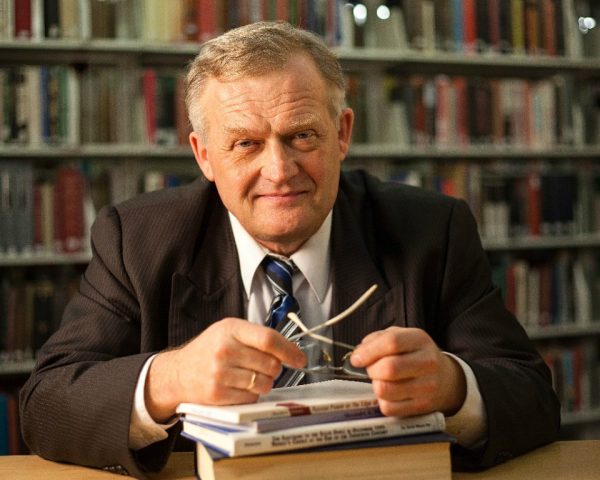Letter from Las Cruces: Hassle in El Paso
Long lines waiting to get into the El Paso County Coliseum
I went to a Trump Rally.
Well, sort of. I didn’t get in.
I waited three and a half hours in line, not including the half hour it took for me to find a parking spot. It was a Pastor parking spot. I took it anyway.
As I walked to the El Paso County Coliseum, the crowd thickened, and traffic jammed. Along the street were venders, set up with fold-out tables or pulling coolers full of merchandise- tee shirts, snap-backs, buttons and flags of every color overflowed from their wares. A button depicted Calvin from the “Calvin and Hobbes” comic strip, only the face was drawn to resemble Trump’s, urinating on the CNN logo. A hat read “Make America Great Again” in Spanish. One man selling his merchandise wore a blue pull-over sweater read in big white block letters: “Promises made, promises kept. Trump 2020.”
As I drew closer to the Coliseum, we stopped at an intersection, awaiting an officer to allow a crowd through. Across the street, I saw an older woman standing off from the crowd, facing traffic, holding a home-made sign reading “Not my president.” She was the first protestor I had spotted so far.
I decided to walk over and ask her what she was doing. She was tall, bundled in a grey coat and knit scarf to match the streaks in her long hair, tinted glasses facing the roadway stubbornly.
As it turned out, she was an officer on the El Paso Police Department and declined to share her name. I asked her what she thought of Trump’s plan to strengthen the border wall. “Look what we have now and we’re safe,” she said. “It’s just a little game he likes to play. He says we were one of the worst cities [before the wall]; we never have been.”
This wall she refers to is the one built in 2009 between El Paso and Juarez. While Trump has said the wall has significantly lowered crime rates in El Paso, the truth is that crime plummeted between 1993 and 2006, three years before the wall was finished. Furthermore, according to El Paso mayor Dee Margo, the border wall has had no significant impact on the city’s crime rate at all, which suggests most crime is committed by legal citizens within the populace.
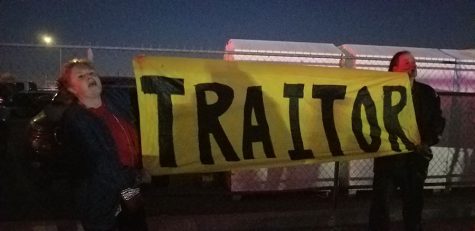
Not all those attending were fans.
I thanked the officer and continued across the street. While a large group waited on the sidewalk outside the gates to the parking lot of the Coliseum, another protestor appeared. An old man wearing a battered western hat marched along the street beside the protestors shouting “Dump Trump! Dump Trump!” and holding a homemade sign saying the same. A tall blonde woman nearby began shouting back at him, “Go USA! Go USA!”
It was a rather annoying exchange that continued for a few minutes, so I decided to ask her why she was doing it. She claimed that for every negative asserted, there should be something positive returned.
“Saying ‘go USA’ does not exclude anyone,” she said. “When I’m saying ‘go USA,’ it’s inclusive. It includes all groups, all religions, all genders.” She felt it was important to be positive because the country needed to come together and “spread love.” While I was baffled why someone would feel the place they could best “spread love” is at a Trump rally of all places – where anyone who remotely disagrees with what is said is forcibly removed, where reporters are shouted at and systematic racism and profiling runs rampant – I appreciated the sentiment.
After finally getting into the parking lot, I found myself standing amongst a sea of red MAGA hats, worn by people of all ages, ethnicities and races. Babies were swaddled in blankets to keep out the brisk wind, high schoolers flocked in groups documenting their experience on cell phones, Latinos, Hispanics and black people alike wore some type of Trump merchandise. Several food trucks were lined against the far chain fence so that anyone who dared to leave their spot in line might purchase a hot dog or burger.
Looming above the crowd was a large jumbotron. Throughout the three and a half hours I spent waiting in line I watched it shift from propaganda promotions told by white small business owners about how successful they were due to Trump’s tax policies, along with specifically mentioning “trickle-down” economics.
I heard a voiceover peel over the crowd of a woman who sounded uncannily like Tomi Lahren, advising any supporter who overhears a protestor begin to disrupt the rally to chant, “Trump, Trump, Trump,” until the protestor is removed by security.
The reason Trump can get away with such strict policies is that the rallies are “private,” paid for by Donald J. Trump for President Inc., which was also why I couldn’t bring my own professional camera in with me.
After I was about halfway through the line of at most one thousand people, a commotion from the back stirred. People began shouting. Then running.
I was told later that someone thought they had seen Trump arrive at the rally, although why he would use the front entrance is beyond me. In any case, any semblance of order was destroyed, the caution tape separating the rows was snapped, and I found myself being pushed toward the metal gate that filtered the long – and slow – security check point. The closer I drew, the harder I was pressed. People upset at the thought of their spot in line being compromised began shouting in protest. Some pushing occurring near me, broken up by an officer who somehow managed to wedge his way through the crowd. I was nearly crushed by the pressure from a whole mob of bodies trying to wrestle their way through the entrance.
Luckily, the pushing subsided, even though I was still a thumbs-distance away from everyone surrounding me. My only solace in the now darkening sky, brisk wind and lack of personal space was that an adorable baby carried by a preoccupied mother kept tugging at my hair and giggling whenever she was left unattended.
Fifteen minutes before the rally was to begin, I received word that the stadium was near maximum capacity. The massive knot of bodies I was in the middle of was not moving. I angrily shoved my way out of the crowd and walked brooding back to my car.
My anger was only fueled further as I soon found out what seemed like every street, ramp and exit leading to the Coliseum was blockaded by police cars. It took me two hours to get back to my apartment. I streamed the event on my laptop.
The biggest issue I found with Trump’s policy, besides a whole host of other issues, is the assumption that Mexico- specifically, Juarez – wasn’t contributing to El Paso’s economy. In the area between Las Cruces, El Paso, and Juarez, referred to commonly as the Borderplex, 30 percent of retail and trade profit comes from Mexican citizens. It is very common for people to live in Juarez and commute to work in the States. With Trump’s plans for immigration, these people may not be allowed to work in El Paso or Las Cruces at all.
The border that I have witnessed from my experience living here for over a month is relatively peaceful, or at least lacking the crime often depicted by conservative media. On Jan. 16, the patrol took 247 migrants into custody in Las Cruces, not because they were trying to sneak in, but because they declared to be seeking asylum. Groups as big as 300 have been arriving on the Las Cruces border weekly. Many will just be deported back into the crosshairs of the drug cartels controlling bad parts of Juarez and political wars in Central America.
According to the Bush Institute, legal immigrants have contributed to about half of total labor force growth within the last decade. More immigrants come to the US with college and advanced degrees then most native-born Americans. Immigrants who own small businesses average 11 employees, creating more jobs.
I found more solace in my research before and after the Trump rally than I did waiting in line surrounded by people who trusted a man who didn’t trust the very people meant to deliver the news.
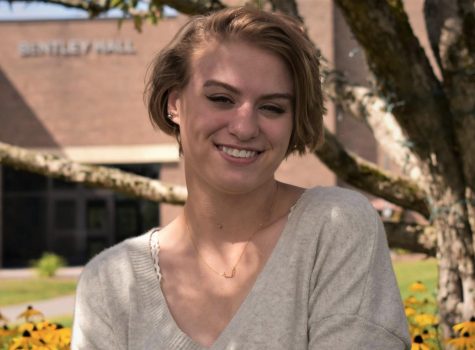
Senior, Journalism & Studio Art
Grew up in Craftsbury, VT
Spring 2018 - Present
I got a black eye and mild concussion in Las Vegas during a rugby...


